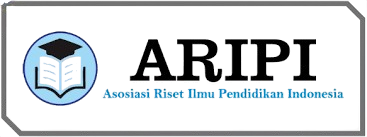PENGARUH PENGGUNAAN VIDEO TERINTEGRASI MODEL PEMBELAJARAN PROBLEM BASED LEARNING (PBL) TERHADAP KEMAMPUAN BERPIKIR KRITIS MAHASISWA PENDIDIKAN GEOGRAFI
DOI:
https://doi.org/10.31571/sosial.v8i1.2260Keywords:
berpikir kritis, video, PBL,Abstract
Downloads
References
Daldjoeni. (2017). Pengantar Geografi. Yogyakarya: Ombak.
Daryanto. (2013). Media Pembelajaran. Yogyakarta: Gava Media.
Dewandaru, K. H. (2015). Pengaruh Media Video Pembelajaran Terhadap Ketrampilan Berpikir Kritis Pada Pembelajaran IPS Kelas Di Sekolah Dasar. Jurnal Penelitian Pendidikan Guru Sekolah Dasar, Vol 3, No.2.
Johnson, E. B. (2010). Contextual Teaching and Learning: Menjadikan Kegiatan Belajar Mengajar Mengasyikkan dan Bermakna. Bandung: Kaifa.
Kurfiss, J. G. (1988). Critical thinking, Theory, research and possibilities. Washington: ASHE (Association for the Study of Higher Education).
Putra, P. D., & Sudarti. (2015). Real Life Videp Evaluation Dengan Sistem E-Learning Untuk Meningkatkan Keterampilan Berpikir Kritis Mahasiswa. Jurnal Kependidikan Volume 45, Nomor 1, Hal.76-89.
Riyana, C. (2007). Pedoman Pengembangan Media Video. Bandung: Program P3AI Universitas Pendidikan Indonesia.
Rusman. (2012). Model - model Pembelajaran. Depok: Rajagrafindo Persada.
Sugiyono. (2017). Metode Penelitian Pendidikan. Bandung: Alfabeta.
Sumarmi. (2012). Model-model Pembelajaran Geografi. Malang: Aditya Media Publishing.
Surya, H. (2011). Strategi Jitu Mencapai Kesuksesan Belajar. Jakarta: Gramedia.
Suwarma, D. M. (2009). Kemampuan Berpikir Kritis Matematika. Jakarta: Cakrawala Maha Karya.
Utomo, S. S. (2019). Guru Di Era Revolusi Industri 4.0. Format Pendidikan Untuk Meningkatkan Daya Saing Bangsa (pp. 70-83). Yogyakarta: Universitas Yogyakarta.
Wijaya, C. (2010). Pendidikan Remidial: Sarana Pengembangan Mutu Sumber Daya Manusia. Bandung: Remaja Rosdakarya.
Downloads
Additional Files
Published
How to Cite
Issue
Section
License
Authors who publish with this journal agree to the following terms:- Authors retain copyright and grant the journal right of first publication with the work simultaneously licensed under a Creative Commons Attribution License (CC BY-SA 4.0) that allows others to share the work with an acknowledgment of the work's authorship and initial publication in this journal.
- Authors are able to enter into separate, additional contractual arrangements for the non-exclusive distribution of the journal's published version of the work (e.g., post it to an institutional repository or publish it in a book), with an acknowledgment of its initial publication in this journal.
- Authors should sign the copyright transfer agreement when they have approved the final proofs sent by Sosial Horizon prior to the publication.

 Download: 466
Download: 466









